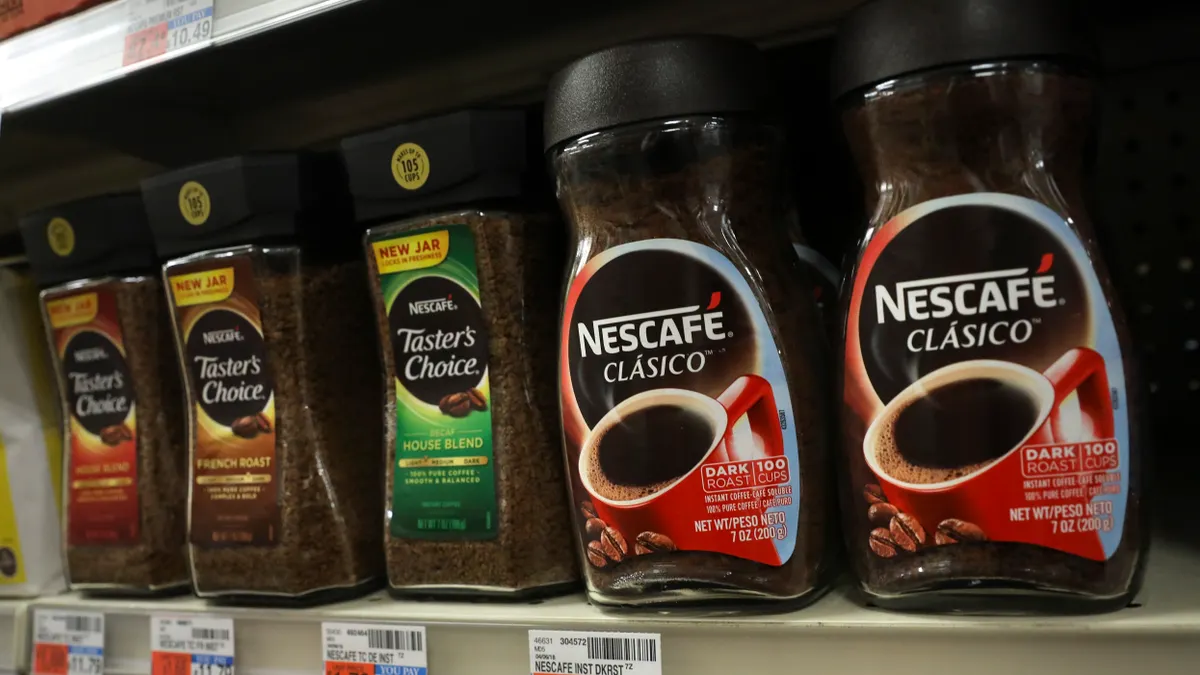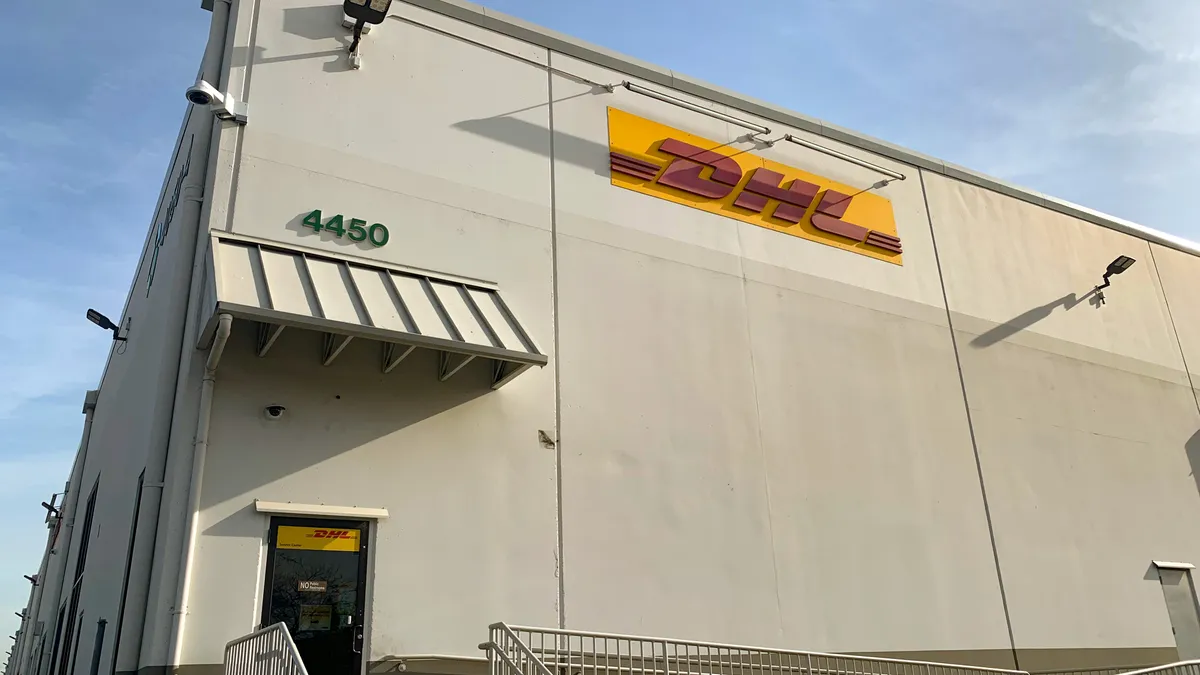"Agility does trump forecast[ing]," Unilever Chief Supply Chain Officer Marc Engel declared in July.
The ability to remain nimble and react to unforeseen changes across the supply chain — from sourcing issues to demand spikes and dips — has proven more beneficial than scenario planning or forecasting, the CSCO said. Cash spent on efforts related to agility had about 10 times the ROI of the dollars spent on planning and forecasts, according to Engel.
That distinction in ROI may not last forever, but in volatile circumstances like the current pandemic, agility is critical, experts said.
We posed the following question to four consultants: How can managers make their supply chains more agile?
The answers below have been edited for clarity and length.

My perspectives on agility are partly informed by a brief incident early in my career in the late 1980s.
My then-manager and I stepped into an elevator where our CEO happened to also be. My manager couldn’t resist the opportunity to brown nose and asked, "What do you think about the economy — is that 'elevator' going up or down?" To which our CEO replied: "My job is not to predict the future. It’s to ensure that we react intelligently and quickly to circumstances. And as far as this elevator is concerned, you’ve got to press your own button!"
Folks in the supply chain need to "press their own buttons" as well. And I see three aspects with which to start:
1. Partner prioritization
It’s essential to gauge and rank the relative reliance on a supplier’s ability to meet fluctuating demands: unexpected price changes, changes in service levels, discontinuities/bankruptcy, product or new service introductions, governmental interference/nationalization, corruption, etc.
A sole-source supplier of an important service or product might constitute a priority partner. A caterer or lawn care service might not make the cut.
2. Mitigation strategies
There is a broad constellation of prospective strategies including:
- Fostering a collaborative relationship for new products/services.
- Joint tracking and resolution on mutually agreed performance metrics.
- Maintaining alternate providers/competitors.
- Prospective in-sourcing of the activity in question.
- Bailment agreements to repossess or re-deploy if necessary.
- Inventory build-ups in case of interruptions.
- Monitoring supplier likelihood of bankruptcy.
- Insurance policies to address supplier lack of performance.
- Technology back-up and disaster-recovery plans.
To ensure that joint improvement efforts or back-up plans will meet business requirements, it will be necessary to simulate, test, drill or otherwise validate that the capabilities are realizable and sustainable.
3. Letting results speak for themselves
A supply chain manager or team is unlikely to have the resources, bandwidth, knowledge and authority to manage all of the preceding aspects. But maintaining a frequent line of communication with priority suppliers serves as the foundation of being able to stay informed and have the benefit of advance information to respond to the businesses’ needs.
The notion of a successful, agile supply chain requires involvement with partners in design, procurement, customer service, legal, finance, IT, government affairs and other functions, depending upon the situation.
Supply chain agility is critically important in these unprecedented times. Make sure it goes all the way to the top floor.

Agility alone is not sufficient. Agility at scale is what matters. To use a sports analogy, it requires quick footwork, anticipation, teamwork, discipline and, most importantly, practice.
The ability to pivot on a dime is critical to scale agility in today’s complex and volatile environment. An agile supply chain is the outcome of an adaptable network structure, enabled by digital technology and driven by customer expectations.
Diversified and flexible footprint
Agility requires a diversified network that can rapidly adapt as conditions change across suppliers, manufacturing, distribution and logistics. It means establishing a distributed manufacturing footprint with a reliable supply. Leveraging flexible manufacturing technologies that can quickly accommodate new products, small batch runs and fast changeovers is key.
It also means establishing a diverse supply base with upside flex capacity. Omnichannel fulfillment capabilities drive the ability to service multiple customer segments and requirements simultaneously.
Digital vision and decision speed
Improving visibility and anticipating demand changes and supply disruptions is critical. This includes integrating with suppliers and customers, sharing real-time demand signals and forecasts, collaborating on new product innovation, and using smart sensors to detect production or delivery issues.
The traditional monthly S&OP cycle will no longer cut it. Rapid re-planning and in-cycle adjustments will become the norm. Digital technologies, such as demand sensing, control towers and rapid "what if" decision support, help proactively identify and mitigate shocks to the supply chain. Adopting advanced analytics, AI and machine learning helps improve insights and accelerate decisions.
Customer expectations
An agile supply chain is in tune with customer needs and expectations. It involves managing the customer experience across ordering, shipment status visibility and value-add services, as well as customer service. Companies can offer an agile experience by carefully managing customer expectations, such as by offering options at specific points in the customer journey.
Agility also involves the ability to operate multi-segment supply chains simultaneously — each with distinct product portfolios, customization, price and speed options. Capacity can be shifted across segments based on needs.
Agility does not mean accommodating every customer request on a one-off basis. That is a recipe for chaos. It is about understanding how to organize your supply chain to service market segments without sacrificing efficiency.

The playbook for 2020 wasn’t meant to unfold like this. Companies are struggling to stay on top of the uncertain and constantly shifting impacts of COVID-19 on their supply chains and balance cost optimization against the need for resilience. To pull off this tricky balancing act, supply chain leaders should focus on several trends:
CEOs are focused on improving supply chain resilience. Executives should use the extra organizational focus to help shore up their supply chains in a manner appropriate to their firm’s risk appetite.
A multi-local approach
A confluence of factors is driving a shift from global, low cost networks to a multi-local approach with an emphasis on agility. These include escalating wages in traditional low-cost manufacturing giant China, the growth in Asia’s share in world trade, rising nationalism with shifts in global trade policies, and the disadvantages of long, inflexible and complex global networks at a time of high uncertainty in demand and supply.
Advances in automation and analytics can enable this shift to a multi-local approach. Technologies, such as multimodal lines, or hyperflexibility with location, equipment, lot sizes and labor can offset the costs of nearshoring, while advances in analytics improve near-real-time decision making.
Networks and partnerships
Agile networks can increase operational efficiency, evidenced by companies that began retooling networks in response to the U.S.-China trade war. By having two or more locations to optimize capacity allocation, companies vastly increase their resilience and, therefore, ability to respond to unanticipated shifts in demand or supply without sacrificing cost or quality.
Partnerships with strategic suppliers are essential to proactively model and design supply chain networks to balance cost efficiency and quality alongside agility and resilience to create a competitive advantage for the long term.

Recognize that agile supply chains are not panaceas
Agile supply chains help companies adapt quickly and effectively to changing markets and unpredictable events, such as pandemic diseases, natural disasters or trade wars. They deliver significant benefits: faster sales growth, lower inventories and fewer returns.
But they also require capital expenditures, technology investments and often higher costs driven by increased optionality and lower utilization rates. Executives must make judicious tradeoffs as they balance cost and efficiency with speed and flexibility. More agile is not always better agile.
Use the 80/20 rule
Most articles about agile supply chains are exhausting to read, let alone implement. They detail how leaders must revolutionize facilities, equipment, business processes, information systems, technologies, partner ecosystems and more — as if the longer the list, the better the advice.
But agile is all about prioritizing, sequencing, testing and learning. The 80/20 rule also applies to building agile supply chains. Start by finding the key constraint to your agility. Fix it. Test the results. Then tackle the next constraint.
First, fix the feedback loops
Too many executives are steering their supply chains by trying to predict the unpredictable rather than creating fast, factual feedback loops. How many prediction models forecasted correctly that COVID-19 would drive skyrocketing demand for toilet paper and bottled water? None that supplied my local stores.
Data for essentials, such as inventory availability, lead times and order accuracy, are often inaccurate and wildly different across functions. For most businesses, this is the first thing to fix. It’s hard to adapt quickly and effectively if you’re flying blind.
Build supply chains from customers back
Nothing wastes more time and money than developing the wrong thing. Too many executives assume that every customer demands faster (and higher cost) deliveries, even though professional home remodelers, for example, don’t want a truckload of appliances dumped on site three days earlier than planned. They want orders to arrive on time, in full and undamaged.
The key to success is to design agile supply chains that give your targeted customers what they value most.
This story was first published in our weekly newsletter, Supply Chain Dive: Procurement. Sign up here.






















